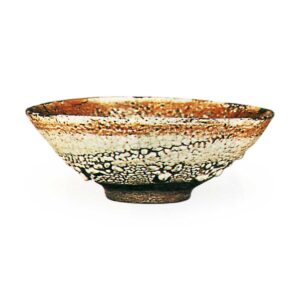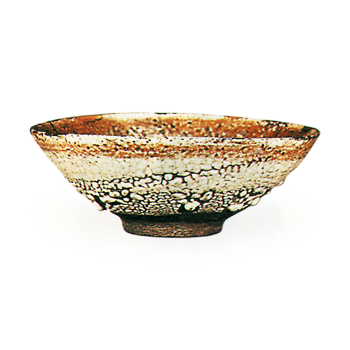
An old kiln of Karatsu ware. The kiln was located in Minamihata Village, Matsuura County, Hizen Province (Fusukei, Minamihata-cho, Imari City, Saga Prefecture), and opened in 1616 under the protection of the Terasawa family, lords of the Karatsu Castle.
Blessed with clay as a raw material, and with its proximity to Imari Bay, Imari merchants actively exported their pottery to other countries. Shigeemon Nakazato, a potter from Shiinomine, went to Mikawachi (Mikawachi-cho, Sasebo City, Nagasaki Prefecture) and opened the Sugibayashi Kiln, which later became the official kiln of the Marquis Matsuura of Hirado. In 1652-5, Okubo Kagamori, lord of the Karatsu domain, had Umemura Wabei use potters from Shiinomine to open an imperial kiln in Hirayamakami, Aichi-Mura (Aichi-cho, Higashimatsuura-gun). Until then, pottery for official use had been made in Shiinomine, but this was done in addition to pottery for the general public, and Hirayamakami was the first official kiln to produce only items for the feudal lords. The Shiinomine kiln, which had been thriving, had a public dispute with Imari potters in 1700, and the following year, the kiln was forced to leave the Imari area, leaving only a few potters. This was called the “Suinomine collapse,” and from that time on, the kiln suddenly declined.
According to a 1686 note by Imamura Sannojojo, Takahara Goroshichi came to this area in 1619 and stayed for seven years, leaving in 1625 to go to Minamikawara, Arita.
The potters who first gathered at Shiinomine were generally from Korea, and their kiln remains are often covered with red clay shards and some are painted white. Ordinary kilns are usually cloudy white, but this type of kiln has pale yellow clay. There are also black glazes. There are also copper green glazes in mottled glazes. In addition to iron-black patterns, there are also white mud brushwork patterns.



